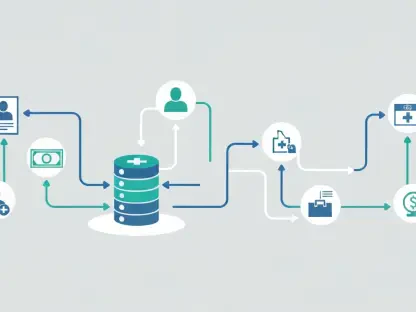In a rapidly advancing technological world, the aviation industry is experiencing a significant shift driven by artificial intelligence (AI), connectivity, and cybersecurity. AI-integrated avionics, once a futuristic concept, have now become instrumental in enhancing aircraft operational performance. This technological integration is not only providing a boost in efficiency but also leading to an increase in the value and lease rates of aircraft. Airlines are recognizing the benefits of incorporating AI into their systems, which include predictive maintenance, fuel optimization, and enhanced decision-making capabilities, all contributing to improved overall performance and cost savings.
The in-flight connectivity landscape is also evolving at an unprecedented pace. John Wade of Panasonic Avionics explains that while there have been numerous advancements in bringing high-speed, reliable connectivity onboard, several challenges remain. The rollout of 5G networks in the U.S. has prompted commercial aviation operators to evaluate and ensure that their radio altimeters operate without interference. As e-enabled aircraft become more prevalent, digital and software-based connectivity services are transforming the in-flight experience. These advancements are providing new opportunities for operators to distinguish themselves in a competitive market.
However, the rapid technological progress also introduces new cybersecurity challenges. A recent breach at SAS Scandinavian Airlines underscored the importance of robust cybersecurity measures in maintaining the integrity of aviation operations. The industry is calling for stricter regulatory frameworks to manage the integration of uncrewed aircraft systems (UAS) and safely incorporate small UAS into low-altitude airspace. This development is essential for the future of advanced air mobility, which promises to revolutionize how people and goods move. Innovations in in-flight entertainment (IFE) and connectivity, such as Thales’ Avant UP platform, are further enhancing passenger experiences, making each flight not just a journey but an enjoyable experience.
Low Earth Orbit (LEO) satellites are emerging as a game-changer for next-generation in-flight connectivity. Unlike traditional Geostationary Earth Orbit (GEO) satellites, constellations like Starlink, OneWeb, and Telesat are providing seamless and uninterrupted connectivity. The increase in data exchange demands of modern aircraft is being efficiently managed through advancements like Aircraft Communications Addressing and Reporting System (ACARS) over IP. This system supports the growing need for real-time data transmission, enabling better communication and coordination across various aspects of flight operations. Additionally, the development of aircraft edge computing is set to enhance real-time data processing and operational efficiency further, driving continuous improvements in aircraft performance and customer experience.
Still, addressing the dynamic aviation cybersecurity threats remains a complex task given the evolving nature of cyber attacks. Regulatory bodies and industry stakeholders are working together to create comprehensive frameworks that can effectively tackle these challenges. The interconnected themes of AI, connectivity, and cybersecurity are driving significant transformations in the aviation industry. As these technologies continue to evolve, they bring with them both opportunities and challenges. The aviation sector must remain vigilant and adaptable, ensuring safety and efficiency while embracing the advancements that define the future of air travel. The journey ahead calls for robust measures and innovative solutions to harness the full potential of technological advancements in aviation.









